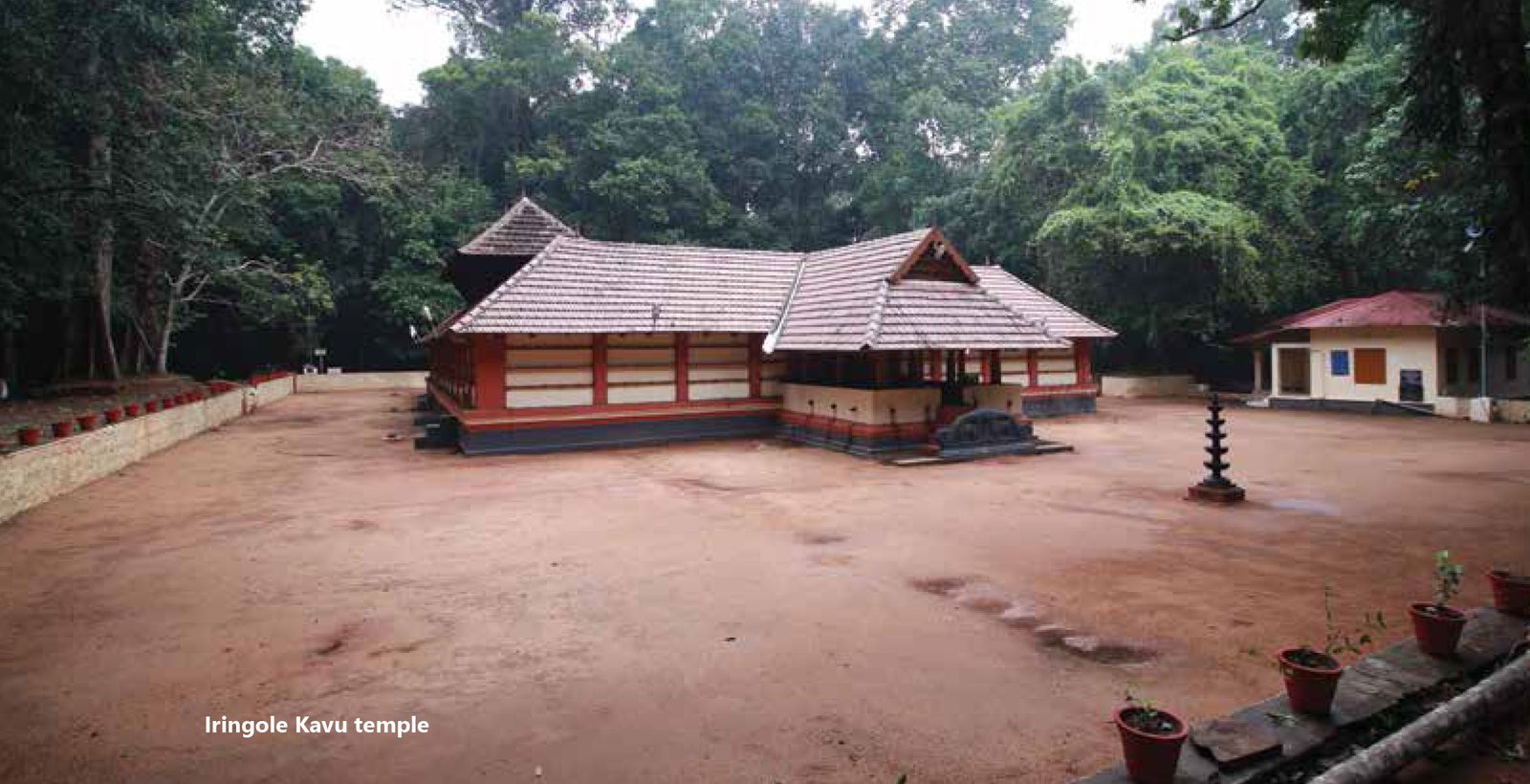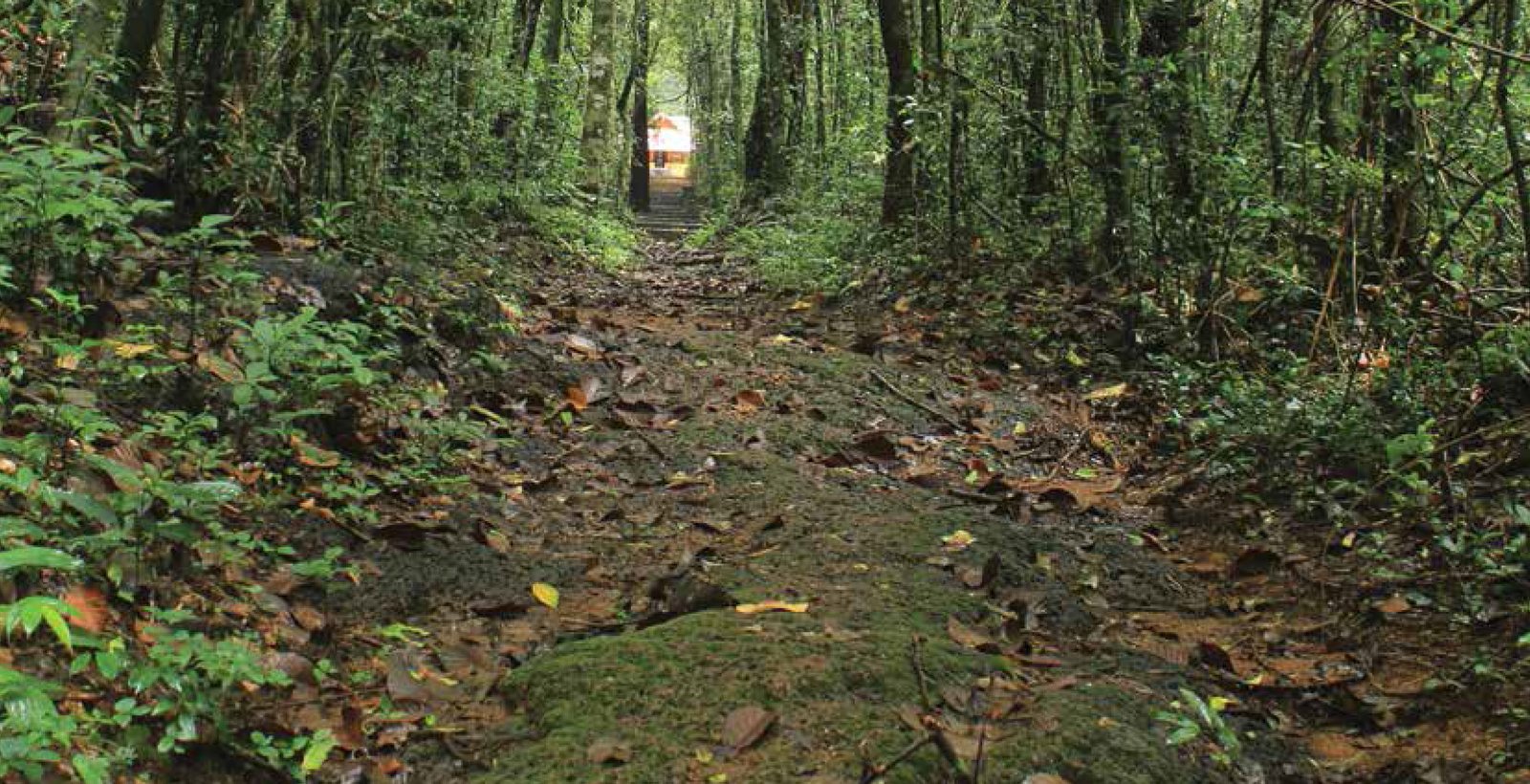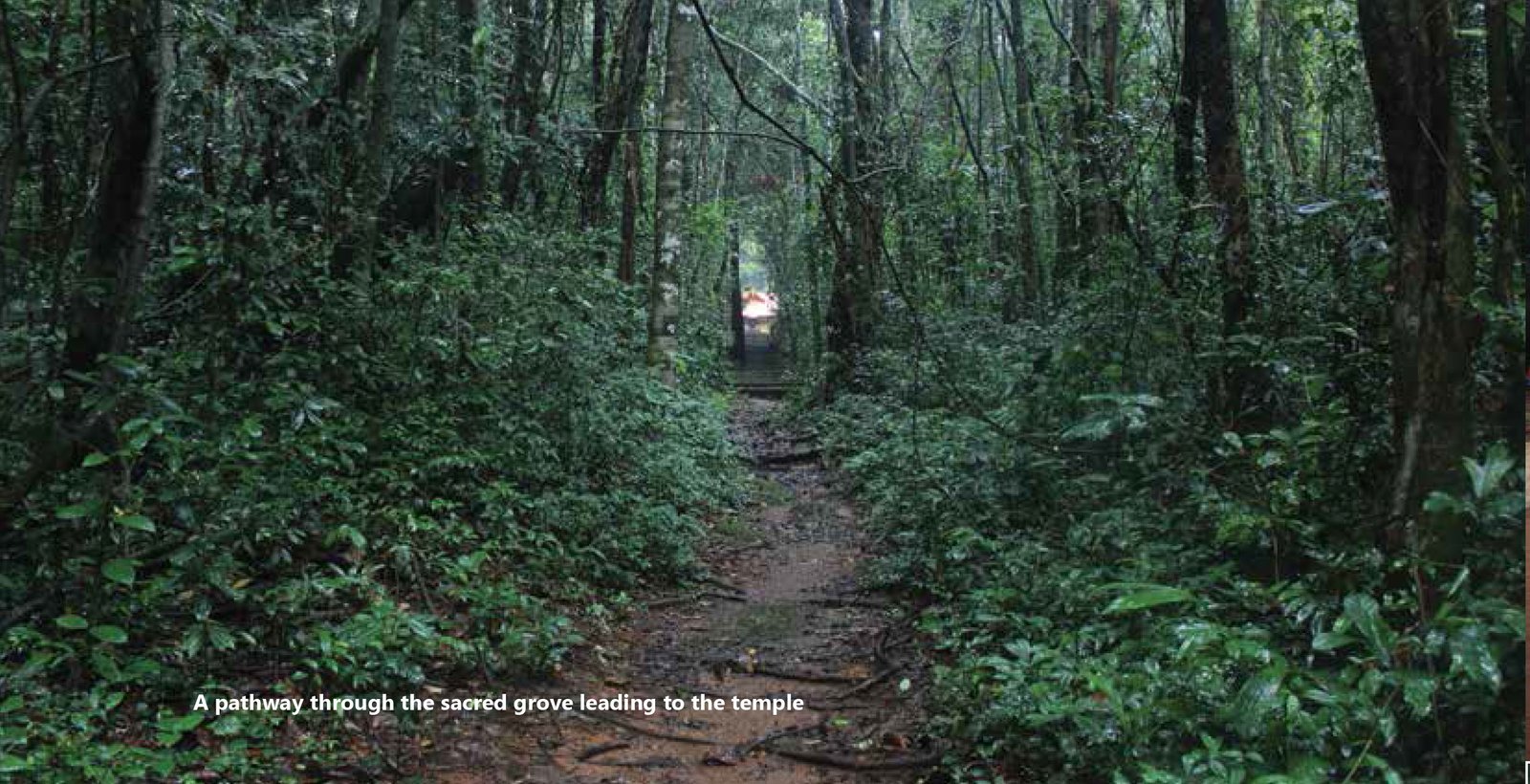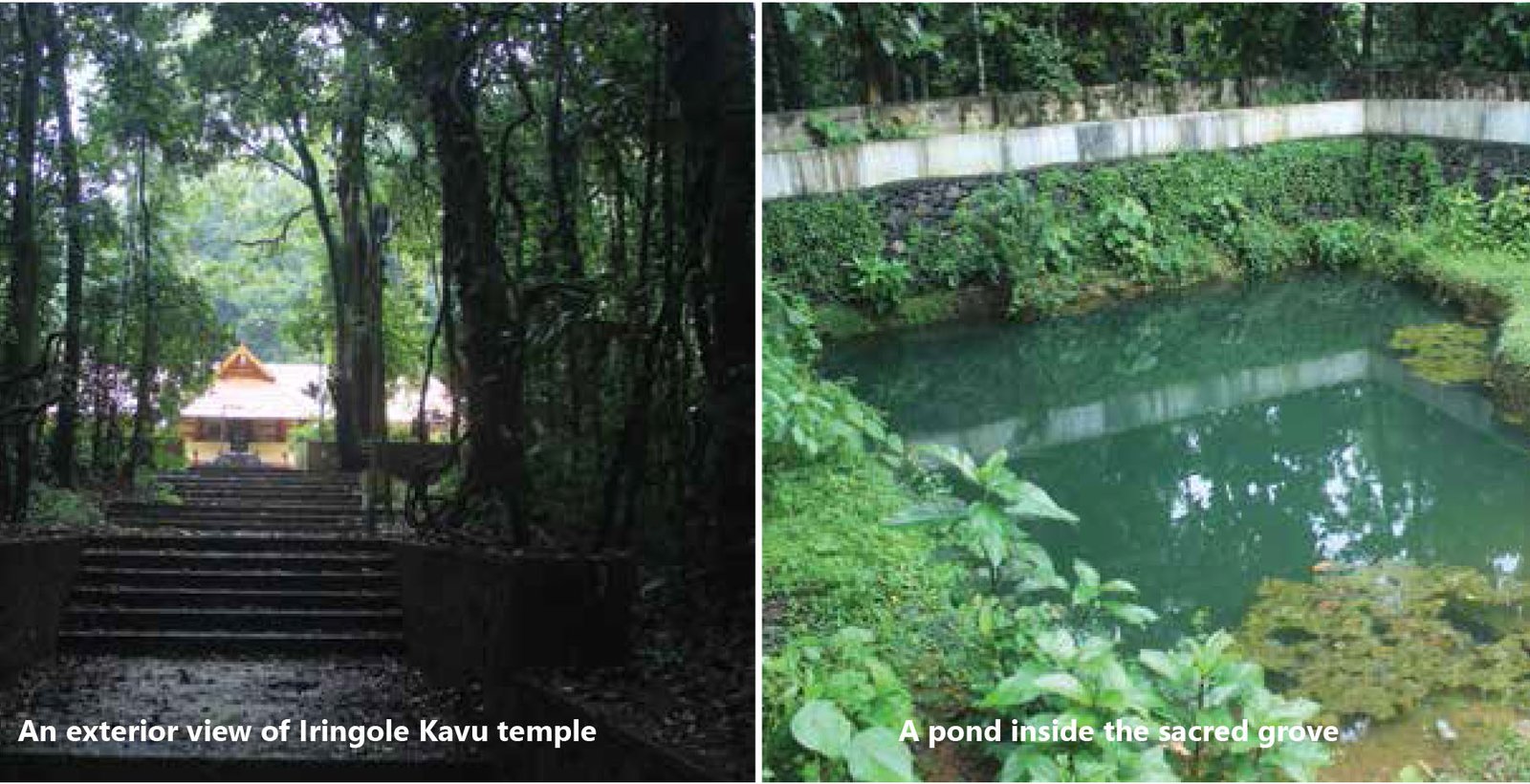Divinity and Wilderness
Text and Pictures: Ravi Shankar P
A densely grown miniature forest in the midst of rapidly growing urban jungle surrounded with myths, beliefs and mysteries – this is ‘Iringole Kavu’ sacred grove. Here sunlight is impenetrable even during heavy summers.
Situated near Perumbavoor in Ernakulam, Iringole Kavu is an angelic monsoon destination which you would love to go for a stroll. Once you are inside the grove at times of heavy showers, you can hear the droplets of rain making its way down through the green canopy, accompanied by the chirping of birds and chattering of squirrels.
All these natural features of this sacred grove, gives you an energetic experience of being in a tropical forest, although this one is not legally considered as one.
Like most sacred groves, Iringole Kavu too has a temple which is edicated to Goddess Durga. The green woods surrounding the temple exhibit a very rare combination of divinity and wilderness.
The temple inside the sacred grove is said to be 2700 odd years old. The major fest (pooram) of the temple happens from second to the tenth of the Malayalam month of Meenam (roughly between March and April). This fest is also a treat to watch when the whole forest is lighted up and decorated. Unlike other temples, here only female elephants participate for the pooram.
The natives near the sacred grove consider the trees inside the forest to be various gods. Due to this reason the place is well protected and not even a single stick is removed out of the grove.
The entire forest is spread over 50 acres of land and it would take one an entire day to cover the entire sacred grove.
One member of the temple trust said that once it was a dense forest than it is now and even sunlight could not reach the ground. But in 1993, many big trees fell after a storm.
Considering the ecological importance, the Kerala Biodiversity Board had declared Iringole Kavu as one of the five biodiversity heritage sites in the state
Inside the grove
There are three main pathways and several smaller ones that lead to the main temple. After walking deep into the forest you may feel that you lost your way. But all the pathways converges to a single point. Also the forest houses no dangerous animals, so the visitors do not have to worry about their safety inside the forest.
The 50 acres of forest land is home to animals, birds and flora of the Western Ghats that are on the endangered list. The stretch has rare woods like the ‘Kambakam’ or Iron wood of Malabar, white pine, wild jack (Anjili) teak etc and medicines like wild pepper and long pepper. There are 44 species of birds in this forest including parrots cuckoos and eagles.The grove is seen in different hues of green even during heavy summers. This is because of the presence of many marshes and ponds in the vicinity. The ‘theerthakulam’ or temple pond inside the grove is also lush through the year.
Legends
Like many other sacred grove, Iringole kavu too has many legends associated with it. As per one of the many stories, the most popular one is associated with the goddess here, Durga.
The goddess is considered as the eight child of Devaki and Vasudeva, who were imprisoned by Kamsa. It is said that when Kamsa attempted to kill the newborn baby, it rose to take the form of goddess Durga and made her appearance in the sky with a lighting. The place where the lighting struck on earth was called Irunnol, which later became Iringol.
Another legend is associated with one of the trees inside the grove, ‘Valiya llavu’, which is worshipped by the devotees.
The legend narrates that a sage named Trinabindu had been meditating inside the grove when Hanuman, the monkey god distracted him. The sage in anger chased away the monkey god. Hanuman then returned with an elephant and a lion, which further enraged the sage who
cursed Hanuman, who happened to sitting top of a tree that he would be unaware of his strength.
Hanuman’s father, the wind god came to know about the curse and began to shake every single tree inside the grove. Except the tree on which Hanuman had been sitting rest all trembled to the power of Vayu. This tree then came to be known as Valiya llavu.
Things to know before you visit
Currently the temple is under the Tranvancore Devaswom Board. During the olden days the Naganchery Mana family was in-charge of the temple. The family’s ancestral home is near to the sacred grove and today this house is a museum run by the tourism department. The museum
houses numerous artifacts of yesteryear importance.
The museum compound has a children’s park and a small canteen, where the tourists can get some refreshments.The tickets for an adult is at Rs 20 and for children it is Rs 10.
The temple and sacred grove is open to believers of any religion who are ready to follow the rules of temple. Also, the area is plastic litter free zone, so if you happen to carry any plastic material kindly refrain from dumping it inside the forest area.
Getting there
Iringole Kavu is situated in Kunnathunad Taluk of Ernakulam district. It is located 4km away from
Perumbavoor town between Perumbavoor and Kothamangalam on Aluva-Munnar Road. The temple and sacred grove is placed in the village Pattal which is 35 km away from Kochi.
By bus : Buses are available from Aluva and Angamaly. Get down at Perumbavoor and take an auto to Iringole Kavu, which will not cost more than Rs 100.
By rail : Aluva is the nearest railway station which is 20km
away.
By air : Nedumbassery is 17 km away.







